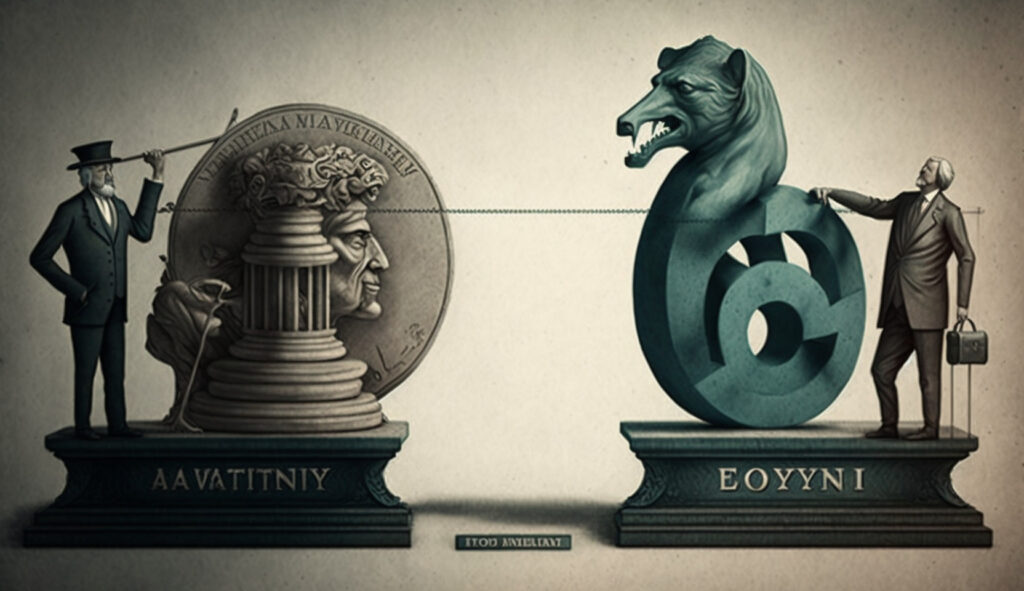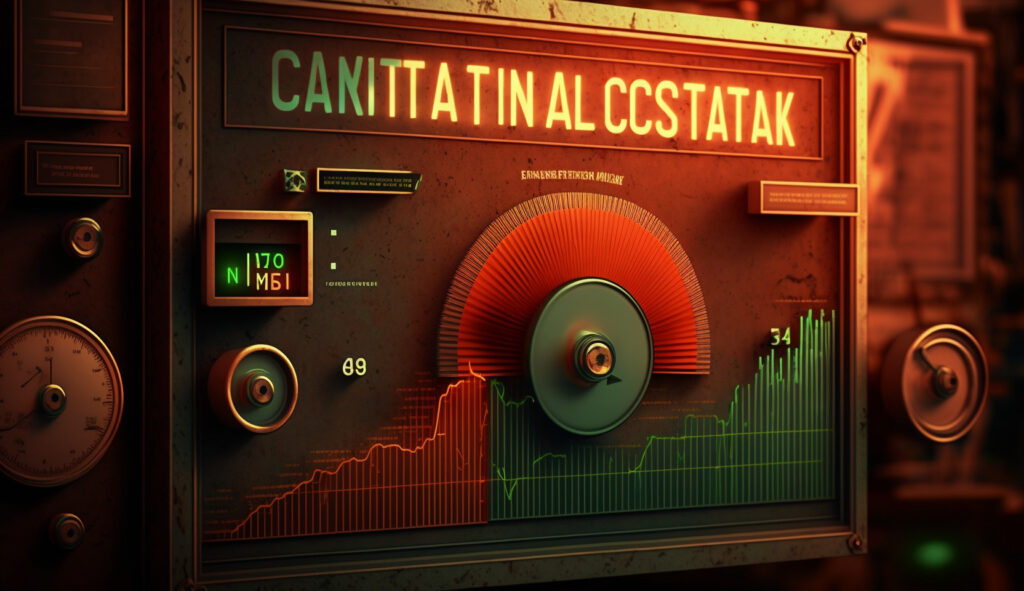
Understanding inflation targeting isn’t just about keeping up with economic news or impressing friends with your market lingo. It’s about grasping the pulse of the economy, the moves that shape our financial landscape, and how they trickle down to affect everything from the interest rate on your mortgage to the price of your morning coffee.
Central banks, use inflation targeting as their steering wheel, guiding the economic ship through the turbulent waters of market fluctuations, investment dynamics, and currency valuations. For anyone with a stake in the financial game, be it a casual investor, a day trader, or someone saving for retirement, getting a handle on how and why central banks adjust interest rates in pursuit of specific inflation targets is crucial. It’s about understanding the strategy behind the economic stability we often take for granted and the reasons behind the financial decisions that impact our daily lives.
Why Understanding Inflation Targeting Is Important?
In simple terms, inflation targeting is how central banks try to keep the economy steady and prices stable. Think of it as the bank’s way of ensuring things don’t get too expensive too quickly. For anyone dabbling in the markets, from your day trader working from their home office to big-time investors, understanding how these inflation targets influence everything from the interest rates on your savings account to the value of the dollar in your wallet is crucial. It’s all connected – when the central bank tweaks interest rates to hit their inflation goals, it doesn’t just affect how much loans cost. It also sways how much your investments might return and how much your currency is worth globally.
And here’s where it gets interesting for traders. Central banks play this game of adjusting interest rates based on their target for inflation, which has a domino effect on everything in the economy. For instance, how much it costs to take out a loan, how much money you might make on investments, and how strong or weak the currency is. Traders are on the edge of their seats, trying to anticipate these moves to make smart decisions that could either save or make them a ton of money.
But it’s not just about watching interest rates. Inflation targeting involves keeping an eye on key indicators like the Consumer Price Index (CPI). Indicators basically tells us how the health of the economy is doing. This info is gold for traders looking to make moves that are backed by solid data.
inally, the guessing game about what the central bank will do next with inflation has a huge impact on how investors behave. Staying updated with the latest announcements and communications from the central bank isn’t just good practice; it’s essential for making educated guesses on how the markets will react. This foresight is what separates the skilled traders from the rest, helping them make moves that are a step ahead.
How Do Central Banks Set the Inflation Target?
Do you know how setting the perfect temperature on your AC can be a bit of an art? That’s kind of what central banks are doing with inflation targeting. They’re aiming for that sweet spot, which for many developed countries, is around 2 percent inflation. It’s a bit like Goldilocks—not too high, not too low, just right. This figure is based on the consumer price index, which tracks the price changes of a basket of goods and services over time.
But here’s where it gets interesting. Managing an economy isn’t straightforward. There’s a lot of room for interpretation and adjustment, so central banks often allow themselves a cushion of about 1 percent either way. This means if they’re aiming for 2 percent, anything from 1 to 3 percent is within their comfort zone.
Why not aim for no inflation at all?
On paper, zero inflation sounds like a stable economy where prices don’t increase. However, the reality is a bit more complicated. Aiming too low risks tipping into deflation, where prices start to fall. While cheaper prices might sound great, they can lead to a slowdown in spending. After all, if prices are expected to fall, people might delay buying things, hoping for a better deal later. This can actually harm the economy, creating a cycle that’s hard to break.
Deflation is a steady decline in an economy’s general price level of goods and services. It increases the purchasing power of money. Deflation is the opposite of inflation, which raises the general price level on a regular basis. Deflation can hamper economic activity. It reduces demand as people and companies delay their purchases to expect lower prices in the future. Additionally, deflation may worsen the debt burden as the actual value of debt increases.
Monetary policy, while powerful, isn’t a magic wand that central banks can wave to fix every economic hiccup, especially when it comes to tough challenges like deflation (where prices drop) or when inflation decides to skyrocket. Suggesting a target inflation rate over 3 percent is not really a great move. It’s like opening a Pandora’s box of volatility and uncertainty. Essentially, it could trigger what’s known as inflation shocks, making the economy’s ride much bumpier than needed.
Why do Central Banks Target 2% Inflation?
It’s not just a random pick. Central bankers have found a sort of sweet spot with it. This rate is high enough to keep the economy’s wheels greased against the sticky brakes of deflation but low enough to avoid those wild swings of high inflation. It’s about finding that equilibrium that keeps things steady without the drama.
And here’s another layer. The inflation rate that central banks aim at isn’t about what’s happening right now. It’s looking at the past year’s price change for a mix of goods and services. So, in a way, it’s like driving while looking in the rearview mirror, which might sound odd. But there’s a method to the madness—since shifts in interest rates don’t show their true colors in the economy overnight. It’s more of a slow burn, thanks to what’s known as the monetary transmission mechanism. That’s why central banks play the long game, focusing on where they think inflation will be in two years, not just the inflation snapshot of today.
Although inflation-targeting demands may vary from country to country, they all share common elements. Specifically, they involve setting a clear inflation target, decent bounds, and a demand on central banks to be transparent in their goals and policy actions. Very often law lays out such targets and demands, laying legal obligations on central banks.
Fun fact: There are a couple of central banks that don’t specifically target inflation:
The Bank of Japan has a “yield curve control” policy rather than inflation targeting. It means that the bank sets target levels for long-term interest rates and buys government bonds to keep those rates within the target range. The bank also uses monetary policy tools, such as negative interest rates and asset purchases, to achieve its broader economic goals.
What Makes Inflation Targeting Effective?
During the 1990s, both central bankers and politicians agreed that the most effective way to control inflation and maintain price stability was to aim for a specific inflation rate. To meet this target they kept track of various economic variables. Nowadays, many economies rely on inflation-targeting frameworks as the foundation of their monetary and macroeconomic policies.
Despite differences across different economies, many believe the effectiveness of inflation-targeting regimes entirely depends on three fundamental principles:
- the independence,
- the credibility, and
- the transparency.
What Is the Independence of a Central Bank?
Imagine the government as the parent and the central bank as the somewhat rebellious teenager who’s been given the task of managing the household budget, especially keeping the grocery bills (inflation) under control. This setup is pretty important because it keeps the household running smoothly. But here’s the catch: sometimes, the parent has an eye on being voted “Parent of the Year” and might start making decisions that look good in the short term, like throwing a big party (stimulating the economy) right before the vote, which means spending a lot more on groceries than usual.
We all know that buying heaps of party food on a whim can blow the budget, leading to some tough weeks ahead with lots of instant noodles (inflation). The temptation to throw that big party varies a lot, depending on what kind of parent we’re talking about, how strict the household rules are, and the family’s overall vibe.
Because of this, many economists agree that it’s better if the budget decisions—like how much to spend on groceries or whether to throw that big party—are made by someone who isn’t worried about winning “Parent of the Year.” They’re more like that cool, level-headed family friend who knows how to plan a great party without breaking the bank. This is what we call giving the central bank “operational independence.” It means they can keep an eye on prices and ensure the household stays on track, no matter who’s trying to win the popularity contest.
The ECB is an example of a central bank that has targeted independence. On the other hand, there are other central banks (e.g., in New Zealand or the United Kingdom) that the government orders to achieve a specific definition and level of inflation. As a result, these central banks are only operationally independent.
What Is the Credibility of a Central Bank?
When planning an inflation-targeting system, the central bank’s credibility and the trust of people and organizations in it are crucial. To explain the importance of credibility, let’s consider a situation where the government, rather than the central bank, is responsible for targeting inflation, but the government is significantly in debt. Since high inflation can reduce the real value of debt, the government may have a strong desire to set a higher inflation target or avoid meeting the target altogether, which could put in danger price stability and harm confidence in the currency.
If a government heavily in debt tries to control inflation, people may doubt their commitment. Consequently, this lack of trust could lead to high expectations of inflation, regardless of the target. However, if a famous central bank assumes the role of inflation targeting and people trust they will reach their goal, their belief could be self-fulfilling. For instance, if everyone expects the central bank to achieve a 2% inflation target next year, they might start including that expectation in wage claims and other contracts, which could help make the target a reality. Therefore, central banks pay close attention to inflation expectations to avoid unexpected spikes in inflation. If these expectations suddenly increase due to a rapid rise in oil prices, people would embed them into wage claims, which will cause inflation to rise.
When is a Central Bank Considered Transparent?
So, to build trust, one way for a central bank to achieve this is by being transparent in its decision-making process. As such, many independent central banks that target inflation produce reports each quarter, known as Inflation reports. These reports contain the central banks’ views on a range of indices that they consider when making their monthly interest rate decisions.
Typically, these indices include broad money aggregates and credit conditions, financial market conditions, and developments in the real economy. Upon analysis of these metrics, the central banks then provide a forecast of growth and inflation over a medium-term horizon. Usually, this horizon is for two years. By explaining their views on the economy and being transparent in their decision-making, these independent central banks seek to build a reputation and gain trust. It can help them to influence inflation expectations and ultimately make it easier to meet their inflation targets.
Understanding inflation targeting equips traders and other market players with the necessary knowledge. It allows them to assess the economic landscape, foresee policy changes, and make informed trading decisions. It serves as a valuable tool for risk analysis, adapting strategies, and potentially improving trading results.



